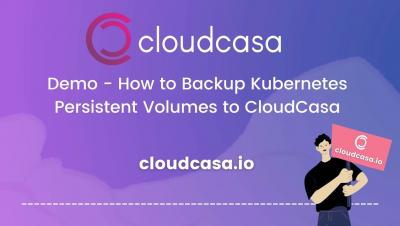Security | Threat Detection | Cyberattacks | DevSecOps | Compliance
Backup
Azure Cloud Storage, PV Backups, and Ransomware Protection with New CloudCasa Release
CloudCasa is a simple, scalable, and inexpensive cloud backup service for protecting your Kubernetes and cloud native applications. We worry about protecting your Kubernetes environment so that you don’t have to! Since the introduction of CloudCasa in November of last year, we’ve been making improvements and adding new features at a steady rate. The CloudCasa team has been very busy this spring, and we’re now pleased to announce yet another major release of new service features!
Automate and Integrate with Rubrik APIs
Recover Faster From Ransomware with Rubrik
Get Kubernetes Backup - CloudCasa - in 1-Click from DigitalOcean Marketplace
Are you a DigitalOcean vendor or user and developing or deploying a Kubernetes application? You may want to preserve your cluster configuration, backup your persistent volumes to protect them from ransomware, accidental deletion, and long-term retention policies. CloudCasa is the only data protection and disaster recovery solution that has been tested and certified as a 1-Click appliction with DigitalOcean Kubernetes and available in their marketplace.
CloudCasa Demo - How to Backup your DigitalOcean Kubernetes with CloudCasa
CloudCasa Amazon Relational Database Service (RDS) Backup and Recovery
CloudCasa Now Supports Data Protection for Amazon RDS
The choice for persistent storage for your cloud native applications depends on many factors including how your cloud journey started and whether your applications were migrated or developed for the cloud. Also, depending on how early you started using containers and migrated to Kubernetes, your distribution or managed service may not have offered the persistent data services you needed.
Learn About CloudCasa - Kubernetes and Cloud Database Protection as a Service
CloudCasa™, a simple, scalable, cloud-native data protection service that supports all leading Kubernetes distributions and managed services, is now generally available through the SUSE Rancher™ Apps & Marketplace. With increasing adoption of cloud database services, CloudCasa adds cloud database support starting with Amazon RDS to its Kubernetes data protection service – addressing both Kubernetes and RDS support in a single data protection service.
Data Protection for SUSE Rancher Managed Clusters is Easy with CloudCasa
Why you Need Data Protection for Kubernetes Now that you have SUSE Rancher managing your Kubernetes applications, you need to consider how to further protect your application data. While Kubernetes is designed to provide a zero-downtime environment, service interruptions can happen, as well as human and programmatic errors and of course the dreaded ransomware and cyber-attacks.











